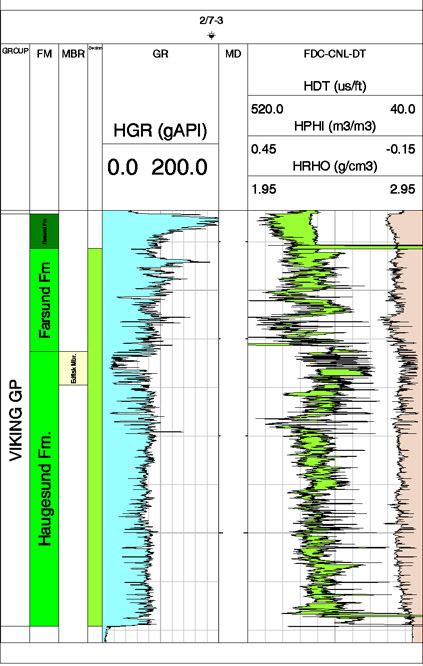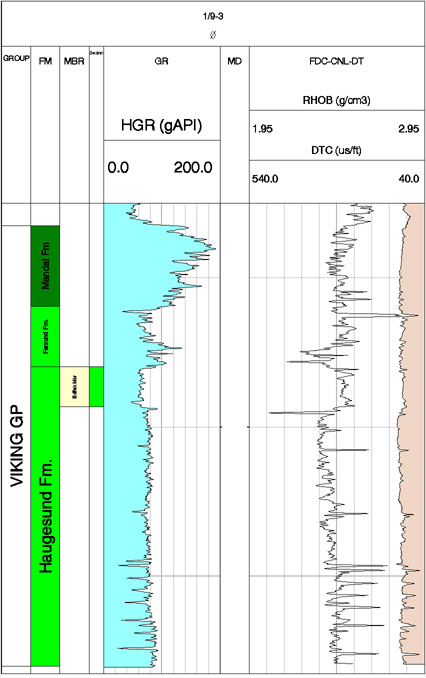Eldfisk Member
(From NPD Bulletin no. 3)
Tyne Group,
Haugesund and
Farsund Formations
Name
From the Eldfisk Field in Norwegian block 2/7.
Well type section
Norwegian well 2/7-3
(Phillips) from 3626 m to 3695 m, coord N56°23'02.9" E03°14'45.9" (Fig. 40).
Well reference section
Norwegian well 1/9-3
(Statoil) from 4359.5 m to 4386.5 m, coord N56°24'56.2", E02°54'15.15" (Fig. 43).
Thickness
69 m in the type well 2/7-3 and 27 m in the reference well.
Lithology
The Eldfisk Member consists predominantly of sandstone but contains
substantial interbeds of shale. In the type well the sandstone is dark
yellowish brown, fine to coarse grained, poorly sorted and generally angular,
while the shale is medium light grey to dark grey. Both the sandstone and
the shale contain calcareous streaks which produce high amplitude peaks on
the sonic log.

Well 2/7-3.
|

Well 1/9-3.
|
Boundaries
The sands of the Eldfisk Formation are entirely enclosed within the thick
upper Jurassic shale sequence of the Central Graben. The Eldfisk Member
is therefore easily distinguished from the underlying
Haugesund Formation and the overlying
Farsund Formation by its lower gamma ray readings.
Distribution
As defined at present, the main development of the Eldfisk Formation is
confined to the region of the Eldfisk Field, although thin time equivalent
sands are present in other parts of the Central Graben.
Occurrences of formation tops in wells
Isochore map HAUGESUND-ELDFISK
Age
Kimmeridgian
Depositional environment
The Eldfisk Formation represents an influx of sand into the axial portions
of the Central Graben at a time of regression, and for this reason it is
postulated that the formation is turbiditic in origin. However, no
conventional cores have been taken in the sands and there is no definitive
sedimentological evidence.



